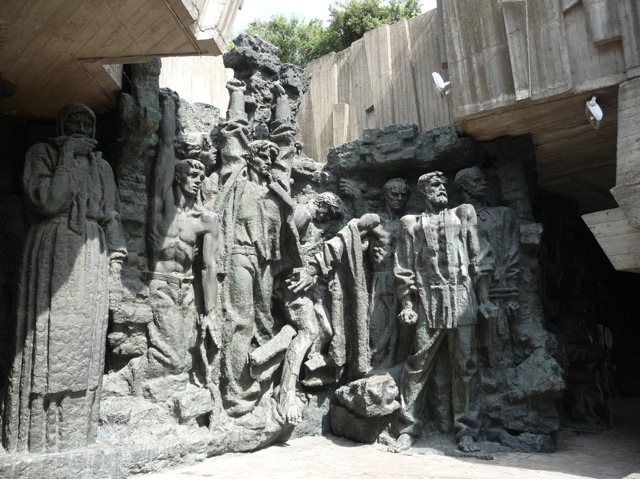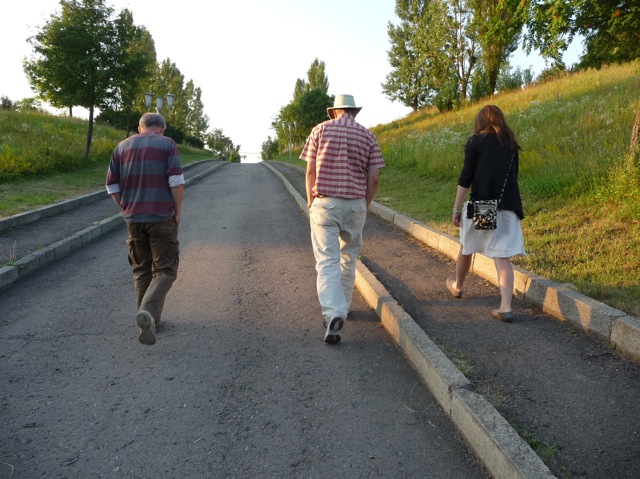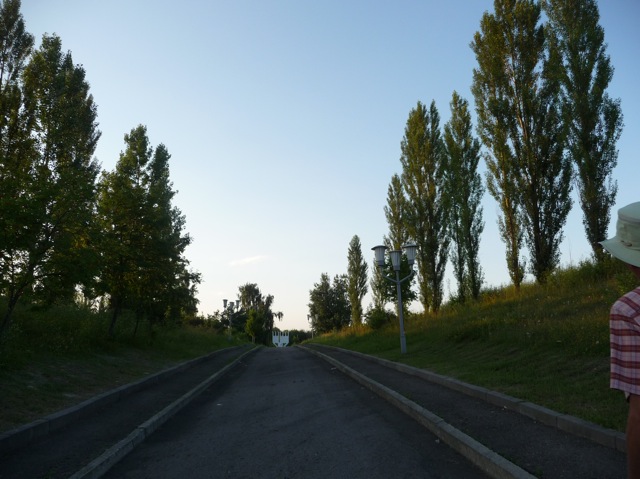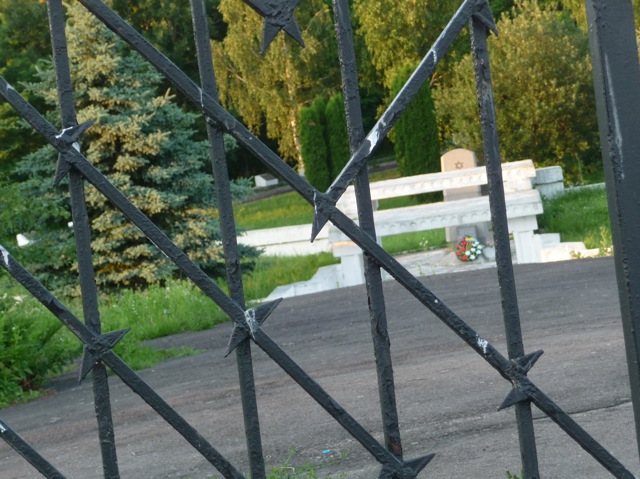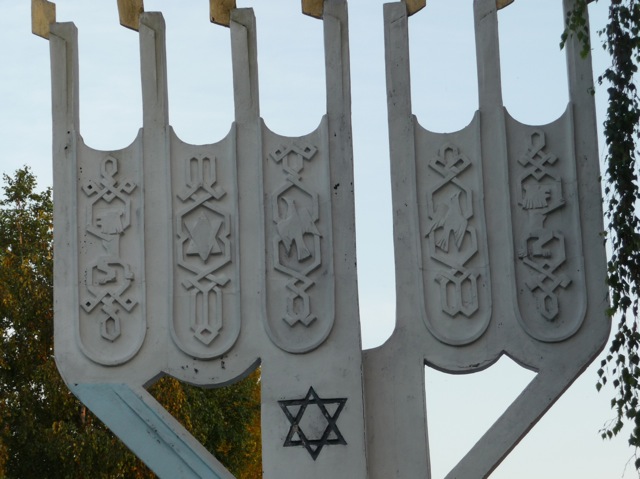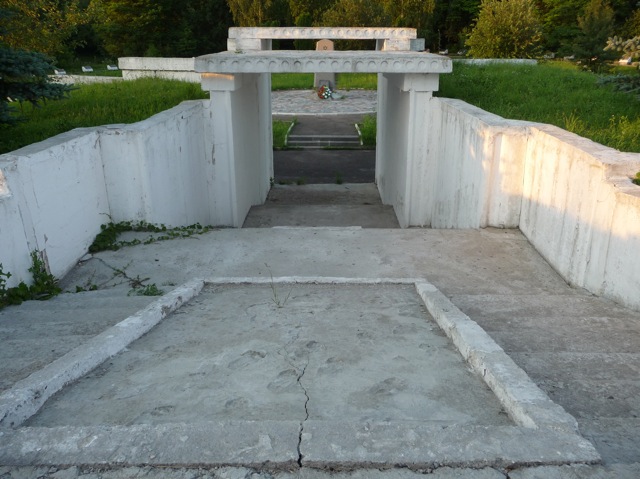It is one thing to learn about history from books, film, and the stories people tell. It is quite another to stand in the places where events happened. Ukraine is a land that has known the depth of human suffering and the horror of man’s cruelty to man. As in fields and pastures all across Europe, what is now a curious variation in the topography, a hollow and a pleasant, grassy mound, may well be the aftermath of an exploding shell. These are the roads over which tank-treads rolled. Villages that once thrived are now gone, their entire populations rounded up and slaughtered for their ethnicity.
Our team operated out of a mission office in the city of Rivne, about five hours west of Kyiv. During the war, the Nazis made Rivne (Rovno) their base in occupied Ukraine. By the time Hitler’s forces had extended themselves this far, they were no longer taking the trouble of sending Jews back to the death camps; after picking out the able-bodied for labor, they were simply lining people up and shooting them. Thousands upon thousands were herded into the city from outlying villages. Before the war, over half the population of Rivne was Jewish. Some sources set this figure as high as seventy-five percent. The city was all but emptied out by the Nazis.
Our team leader, Greg, was a missionary in Rivne for about ten years, and he has done a remarkable job of uncovering historical details and sites. I say “remarkable,” because in most cases, these things are not advertised. A secondary tragedy of the Holocaust in Ukraine is how it is largely swept under the rug. The wounds, even after seven decades, are too fresh. There are too many controversies. I am afraid that we who grow up in America tend to view World War II as a very “pure” war, as wars go — Good vs. utter Evil. It was not at all so for many who were in the thick of it. Ukrainians are torn by revulsion, guilt, anger, regret . . . horror at the atrocities, skepticism at the blanket of accusations and counter-opinions and lies and propaganda that has descended on their aching homeland. Ukrainian folk heroes who fought against Russia for freedom were later said to have been Nazi collaborators. Some Ukrainians, to save their own families, handed the Jews among them over to the Nazis and were hated by their countrymen. Vast hordes of Ukrainians were persecuted, killed, worked to death, and starved; Stalin, many say, made Hitler look like an amateur at atrocity, for Stalin was destroying his own people — yet historical attention and refugee status has been given to the Jews, so there is resentment. It was a time of war; people struggled to survive. The land is covered again with grass and poppies, and people speak as little as possible about these things that happened when the grandmothers and grandfathers were newly born. But the bones of war, like the skeleton of an obscene behemoth, lie in a shallow grave just beneath the rich black soil, and the bones do not rest in peace.
On a sunny morning after coffee, Greg took Sasha, Dave, and me on a short walk across town to see the bunker of General Koch. It sits in the midst of the neighborhood, a low, wide, rectangular structure of concrete reinforced by steel bars, which are visible in corners and edges where the outer surface has crumbled away. Weeds and saplings grow across the roof. We commented on how it would now be undetectable from the air — a grassy lot, a scattering of pebbles. We could not reach its entrance, blocked by a chain-link fence on the bunker’s far side, inside which perimeter some modern construction equipment was parked. I was interested in a strange little wedge-shaped edifice of concrete with a barred door, standing perhaps twenty feet from the main bunker; I wondered if it might house a stairway, another point of access to the stronghold.
General Koch was Hitler’s iron fist in Ukraine. He was so accomplished at killing Untermenschen that he was put in charge of the genocide at Rivne. General Koch’s torture weapon of choice was a whip, and he kept a particularly vicious German shepherd dog who would, on command, maul a victim to the general’s great amusement.
What remains now of General Koch in the world is a decrepit concrete bunker in the heart of Rivne, unmarked by plaque or sign, a couple bulldozers and trucks parked beside it, with weeds growing on the roof.
From a bridge over the rail yard, Greg showed us the platforms on which the Jews were unloaded. The boxcars would have been wooden in those days, unlike the metal ones rumbling and clashing below us. A few walls and steeples rise nearby that predate the war. The Jews might have seen these as they stepped into the fresh air, as they blinked into the gray light of Rivne.
Herded into lines, obeying the orders barked at them, the captives were marched a short half-block to White Street. We climbed down from the overhead bridge and walked in their footsteps. I was struck by how green and pleasant the path was in late June. It might have been any alley among gardens and hedges . . . a short half-block up from the rail yard, up to White Street.
On White Street, the Jews and Gypsies were put into lines, and they were shot. Powdered lime was then dumped onto their bodies. Lime covered the faces, the hands, the hair, the cobbles of the street, and it is from this white shroud that White Street got its name. Here, an inscribed plaque and a monument of statues bear witness to the 82,000 killed on this street alone.
Greg had discovered a Jewish cemetery and memorial hidden away in another part of the city — again, not widely publicized or well-marked — but when one follows a certain uphill lane to its end, there is a deeply moving testament to the victims of the Holocaust. That’s how Greg found it, when he was simply out exploring one day.
On this site, 18,000 Jews were killed in two days of systematic annihilation. They were ordered to strip naked, leave their clothes in a pile, and walk down a hillside to line up along two ditches. Across the way, machine guns waited on tripods. The people knew what was about to happen to them. How did they make that walk down the hillside? How does one, in such a situation, put one foot in front of the other? Did some, in the face of certain death, make a mad break for freedom? Did the people comply in the desperate hope that their obedience would invite less wrath on others still alive? It is impossible to say. We only know that thousands upon thousands walked as lambs.
There was perhaps a moment as the gunners took positions, as the victims overcome with terror and anguish were forced back to their feet, forced back into line. The stillness would have been filled with weeping, with prayers, with pleas, with groanings beyond words. Then the guns opened up, and the bodies tumbled neatly into the ditches atop other bodies, atop other bodies. This slaughter was conducted after the hardy slave laborers were sorted out, so the ones killed here were mainly women, children, and the elderly. Greg described a photo in the Rivne Museum that shows some women taking these final steps. One is so distraught that her legs won’t carry her, and another woman is supporting her.
Now, the hillside is covered with tangled forest. A few strips of cracked, sinking concrete may or may not mark the actual locations of the original ditches. There has been trouble with looters who have come to dig in hopes of extracting gold teeth from the dead.
To the right of the ditches, the cemetery is well-tended and was designed with respect and powerful art. It is laid out in a circle of paths lined by stones bearing the names in Hebrew letters of all the dead — eighteen thousand names. Many of these are eroded and badly faded; but some here and there glow with new white paint traced over them in loving preservation — the work of family members who have come to find their lost ones.
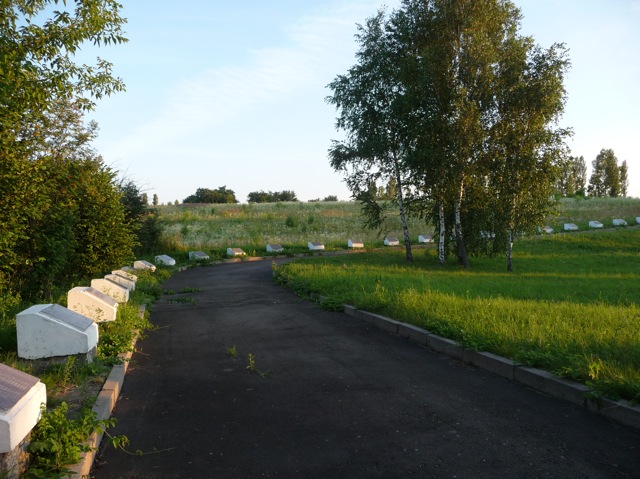
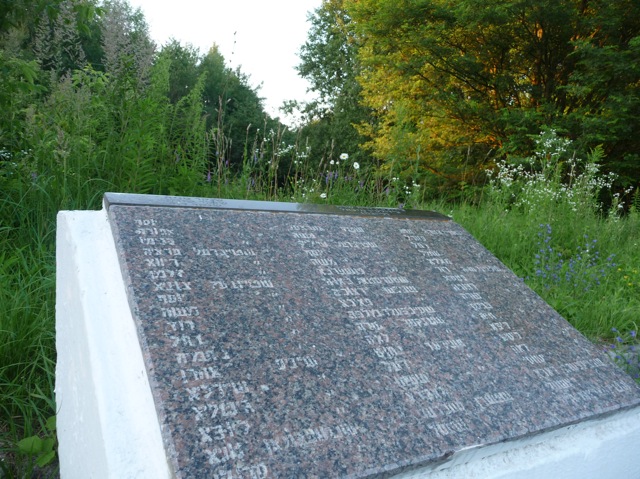 We visited the site just at twilight, when the world was hushed. Birds slowly stopped their songs in the canopy. The cemetery is bordered on two sides by thick forest, a peaceful resting place. The stones bear silent testimony. The most heart-wrenching visual reminder is a very simple work of art done in beds of smooth concrete incorporated with the stairway that climbs down into the cemetery from the entrance gate. Here, the prints of bare feet were pressed into the wet cement — prints of various sizes, some tiny, some full-grown, all descending. All descending the hillside. None returning.
We visited the site just at twilight, when the world was hushed. Birds slowly stopped their songs in the canopy. The cemetery is bordered on two sides by thick forest, a peaceful resting place. The stones bear silent testimony. The most heart-wrenching visual reminder is a very simple work of art done in beds of smooth concrete incorporated with the stairway that climbs down into the cemetery from the entrance gate. Here, the prints of bare feet were pressed into the wet cement — prints of various sizes, some tiny, some full-grown, all descending. All descending the hillside. None returning.
For further reading on this topic, I commend to you the book The Moses of Rovno, by Douglas K. Huneke (Dodd, Mead & Co., Inc.: New York, 1985).
Stay with me. Part III will be lighter!
